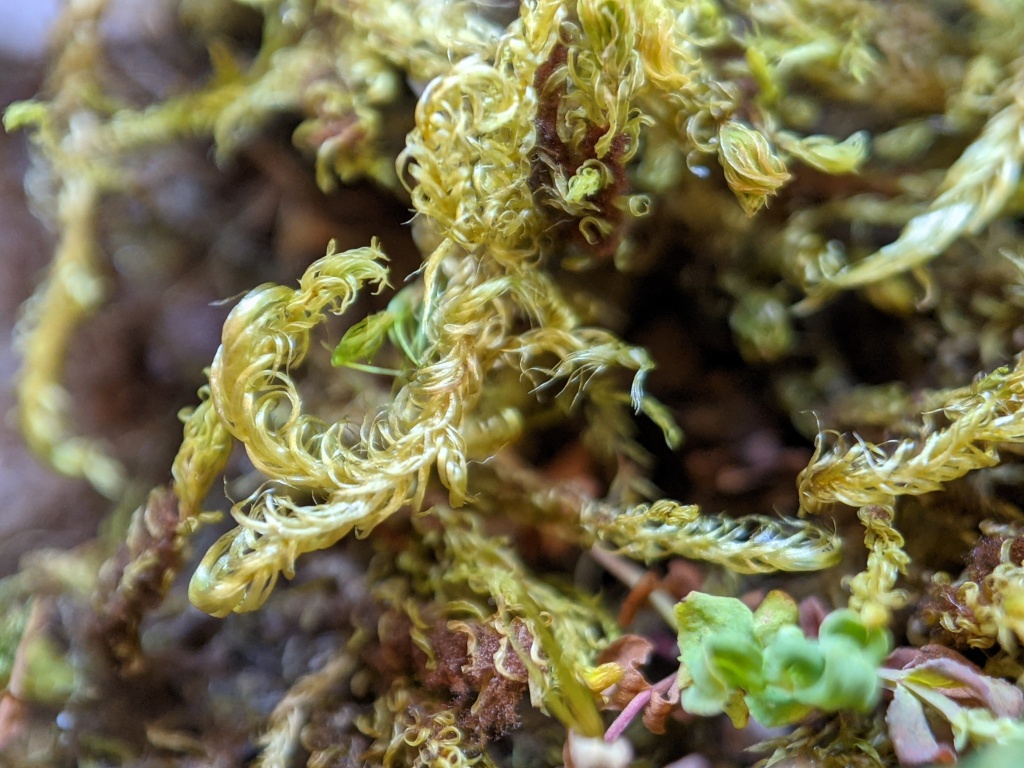Sanionia uncinata
(Hedw.) LoeskeAutoicous. Tufts or mats on soil, logs or tree bases. Stems creeping to ascending, 2–8 (–10) cm long, simple to irregularly branched, rarely ±pinnate, brown with reddish brown rhizoids on stem or abaxial costa insertion, rarely forming tomentum; pseudoparaphylia present, foliose. Leaves strongly falcate to circinate, narrow lanceolate to oblong-lanceolate, 2–4 mm long, 0.35–1.1 mm wide, plicate, ±concave, not or scarcely altered when dry; apices long-acuminate; costae subpercurrent or at least extending ¾ leaf length; margins entire near base or denticulate throughout, plane, without a border; laminal cells linear, 25–120 μm long, 4–8 μm wide, shorter and wider near base, smooth; alar cells hyaline, quadrate to rectangular, ±inflated, (7–) 14–30 μm long, 8–18 μm wide, forming a transversely triangular group of c. 8–10 cells which are bounded above by oblong to ±isodiametric cells which grade rapidly into laminal cells, reduced to 2–3 cells in extreme angles in branch leaves. Perichaetial leaves lanceolate, narrowing gradually to a long-acuminate apex, denticulate at margins. Setae 1–3 (–5) cm long, red-brown, smooth. Capsules suberect to pendent, cylindric, curved or straight, 1.5–3 mm long. Opercula conic or apiculate-conic, 0.4–0.6 mm long. Peristome double; endostome with well-developed cilia.
WPro, HNF, VAlp. On the margins of bogs or in gullies in the alpine zone or among subalpine woodland east from Lake Mountain with a single record also from the Vereker Range on Wilsons Promontory. Also WA, NSW, ACT and Tas. Cold temperate areas of both northern and southern hemispheres and high montane tropical regions of Africa and South America.
 Spinning
Spinning
